
Publisher:
Bonnie King
CONTACT:
Newsroom@Salem-news.com
Advertising:
Adsales@Salem-news.com

~Truth~
~Justice~
~Peace~
TJP
Nov-01-2021 18:13


 TweetFollow @OregonNews
TweetFollow @OregonNews
The Carving Shed
Robert Lundahl special to Salem-News.comI began to realize that for my tribal friends, abuse was an almost constant companion.
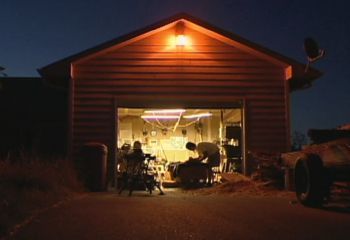 Photos by Author. |
(LOS ANGELES, Calif.) - In one school of thought, positive social outcomes are judged as worthy tradeoffs for historical atrocities. We believe, in the so called rational universe that we supposedly inhabit, effects must have causes, causes must have effects.
But what if they don't, what then?
What does it mean for our society and for us as individuals? Are we then propelled, as if on Jeff Bezos' rocket, to an inglorious past of inhuman behaviors? Hurling stones at one another?
Does this give sanction to political bullying and nasty aggression?
While paying a visit to the "carving shed," a garage at the home of Lower Elwha Canoe Skipper, Al Charles Jr., a story was told. It was a tale of racism and abuse, sadly, from the year before–involving the community of Port Angeles.
I had been invited to participate with the Lower Elwha Klallam people, elders and community on the production of a film on Tribal Journeys.
This previously yearly event is a drug and alcohol free tradition, involving over 50 Coast Salish and Nuu Chah Nulth communities, their large dugout canoes, ground support crews, and youth.
Now with COVID-19 among us, for the last two years this event has not been held. Concerns surfaced among Native people, that their traditional ways of communicating and interacting are not, at present, supported.
My invitation, pre–COVID, came from The Long House Association, a Native American 501(c)3, its President, Linda Wiechman, and the board.
I had traveled to Port Angeles, Washington, from my home in San Francisco to share warm Summer days with the families of Adeline Smith and Beatrice Charles, who were my cultural teachers, interview subjects, and important Leaders and Elders during the making of an earlier film, "Unconquering the Last Frontier."
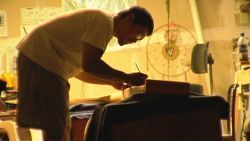 Soon, the canoes would land at Lower Elwha, some traveling for 15 days to get there, from near the northern tip of Vancouver Island.
Soon, the canoes would land at Lower Elwha, some traveling for 15 days to get there, from near the northern tip of Vancouver Island.
Flash forward. When we assume terrible things happen as a part of some benevolent design, we pretend to know which circumstances are beneficial, and which can be blithely ignored in a tidy and convenient story of the past.
Surprisingly to me, animosity toward Natives was thick and palpable in the town, a fact revealed gradually over time, through the experiences of my friends.
The Red Lion Inn sat at the foot of the waterfront along the sand at "Hollywood Beach." It was a place where out-of-town visitors might stay, enjoy the attached Crab House restaurant, and unsurprisingly have a few drinks.
 The story was that a group of conventioneers from a well known shipping company had partied there, then headed out to the beach where the canoes of various tribes had been staged for the journey, prepped to leave the next day.
The story was that a group of conventioneers from a well known shipping company had partied there, then headed out to the beach where the canoes of various tribes had been staged for the journey, prepped to leave the next day.
In a hurtful act, one born of ignorance perhaps, but most likely disregard, these partiers urinated on the sacred canoes.
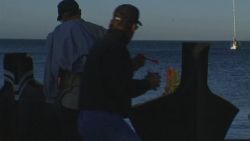 I too felt hurt. As were my friends, who had given their artistry and commitment to the expression of cultural practice and the honor of their ancestors. I felt as if I too had been shamed, as an outsider perhaps, one of the intruders in town for a weekend, unconscious and deliberate in an off-the-Res mindset.
I too felt hurt. As were my friends, who had given their artistry and commitment to the expression of cultural practice and the honor of their ancestors. I felt as if I too had been shamed, as an outsider perhaps, one of the intruders in town for a weekend, unconscious and deliberate in an off-the-Res mindset.
An acknowledgement was required, and a letter would be written to the corporation involved. I needed to write it.
Days passed and a response was received with an offer of "shipping for life." I don't remember whether a suitable apology had been offered.
Certainly any memory of solidarity was not long lived–as it should have been. There was no commitment to cultural diversity awareness, sensitivity training, or culpability. "Shipping for life" was some kind of offer but it seemed to be half hearted, missing the point.
The disrespect weighed on me–having endured my own trauma from toxic corporate stress for over 20 years. An artist among imitators.
It would take me years to begin to release the feeling of presumed diminution.
Trying to put my finger on a larger perspective now, disassociation creates neurotic and dehumanizing myths.
What I'm going to tell you is of my psychological framework today, more rooted.
But the main thing was "learning where I was" and with whom.
A Tulalip Tribal woman, Lita Shelton, later told me a story–a teaching. She was visiting Arizona relatives, and was traveling in a car, through the desert. As the long day passed into night, she fell asleep.
Upon awakening to the dawn's light she was surprised to find that she was no longer in the desert, but instead was winding her way up the pass and into the pine forests along the side of a mountain.
Lita was the Executive Producer of Northwest Indian News. I had come to her with an agenda. The agenda was to work together to get more distribution. To "sell the programs" we were working on, which included the horrible tale of the "Graving Yard."
Her comments came from a place related to the meaning of events, the meaning in events she knew and I did not yet understand.
While I was looking at the externalities, a program, a series, the numbers, she was looking at a sense of meaning in the concept of place, in her tribe, in her effort to tell stories of her people and other Coast Salish Peoples overall, connected to the land and the waters.
The Austrian psychologist Victor Frankl understood well how the construction of meaning—through narrative, art, relationships, stories is important.
He was a survivor of four concentration camps, which took the lives of his parents, brother, and wife. From these experiences, Frankl draws a conclusion.
- “The lesson one could learn from Auschwitz, and in other concentration camps, in the final analysis was, those who were oriented toward a meaning—toward a meaning to be fulfilled by them in the future—were most likely to survive.”
This survival strategy and mentality was embedded in Lita's words. How can you explain to someone with camera from San Francisco that it's because your people have peen annihilated by invaders and disease, hardship and starvation.
It wasn't about the numbers of a TV show or series. The actuality is the fact there is a TV show called Northwest Indian News because a small percentage of the tribal people from several bands and families had survived and come together as an entity, which we call today, The Tulalip Tribes (plural), as sanctioned by the invaders themselves, the government of the United States of America.
The idea that there was a series at all was due to the psychological indomitability Frankl speaks of, rooted in the souls of genocide survivors, a place I would never inhabit and wouldn't want to. So this gentle message, Robert, you thought you were in the desert, but you're really in the mountains, was a challenge to me to think about it more deeply with more empathy, and most importantly, with more knowledge.
The Canoe Journey and sharing it with an entire community, though not yet my own, fully, began a process.
I began to realize that for my tribal friends, abuse was an almost constant companion.
Standing in line at Walmart, a conversation overheard, "Shoulda killed 'em all when we had the chance."
This was only the day I began to tally it all up. It would lead me to ragged, dark, conclusions.
Me Too. George Floyd, children dead and buried by the thousands at Residential Indian Schools.
Where we were taught Jim Thorpe set records at track, played football at Carlisle, a happy cover story of Olympic prowess in Sweden in 1912.
But at Carlisle and at hundreds of other places, in the US and Canada, a darkness akin to Frankl's Auschwitz was revealed.
From the Philadelphia Enquirer:
- The boy called One That Kills Horse arrived in the first group of children brought from South Dakota to the Carlisle Indian Industrial School, stumbling off a train shortly before midnight on Oct. 6, 1879.
Like the dozens who came with him, and the thousands who came later, the 12-year-old was quickly shorn of his hair and heritage.
The school renamed him Alvan.
And after he died two years later, that was the name inscribed on his grave marker.
From Wikipedia:
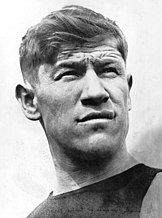 Jim Thorpe in 1912 |
After his Olympic success in 1912, which included a record score in the decathlon, he added a victory in the All-Around Championship of the Amateur Athletic Union In 1913, Thorpe signed with the New York Giants, and he played six seasons in Major League Baseball between 1913 and 1919.
Thorpe then joined the Canton Bulldogs American football team in 1915, helping them win three professional championships. He later played for six teams in the National Football League (NFL). He played as part of several all-American Indian teams throughout his career, and barnstormed as a professional basketball player with a team composed entirely of American Indians.
From 1920 to 1921, Thorpe was nominally the first president of the American Professional Football Association. The APFA became the NFL in 1922.
He played professional sports until age 41, the end of his sports career coinciding with the start of the Great Depression. He struggled to earn a living after that, working several odd jobs. He suffered from alcoholism, and lived his last years in failing health and poverty.
______
"I never was content unless I was trying my skill or testing my endurance." -Jim Thorpe

The Philadelphia Enquirer:
- Native American leaders in this country say the trauma, loss, and suffering of the boarding-school era — which pressed thousands of children through painful, government-led assimilation efforts — continue to run through families and tribes.
"The U.S. also has unmarked graves,” said Christine Diindiisi McCleave, executive officer of the National Native American Boarding School Healing Coalition, known as NABS.
The organization demands inquiry into the “genocidal campaign” to eradicate peoples and cultures in at least 357 government- and church-run schools where many children faced sexual, physical, and emotional abuse.
From Keloland.com:
- “Kill the Indian, Save the Man” was the premise behind establishing the Carlisle Indian School in Pennsylvania, according to the National Park Service.
The words are those of Col. Richard Pratt, who started the boarding school that housed indigenous children from across the U.S. The school opened in 1879 and closed in 1918.
About 200 children died at the school. According to the U.S. National Library of Medicine, “...many of the first Carlisle students became ill from diseases, such as tuberculosis, and died in the school’s opening years."
Ian Moseby and Erin Millions writing in Scientific American on August 1, 2021 state:
- The recent discoveries of more than 1,300 unmarked graves at the sites of four former residential schools in western Canada have shocked and horrified Canadians.
Indigenous peoples, whose families and lives have been haunted by the legacy of Canada’s Indian residential school system, have long expected such revelations. But the news has still reopened painful wounds.
Before the canoes of Indigenous Nations would leave for their next destination, a ceremony was held.
Understanding the entire Canoe Journey is a ceremony of healing, a spiritual awakening, and cultural reanimation; it doesn't just happen one day.
- The goal of Canada’s Indian residential school system, after all, shared that of its U.S. Indian boarding school counterpart: “Kill the Indian, and save the man.”
More than 150,000 children were taken from their homes between 1883 and 1997, often forcibly, and placed in distant boarding schools where the focus was on manual labor, religious instruction and cultural assimilation.
One morning at 6:30 am:
With the canoes again set up on Hollywood Beach. members of the Indian Shaker Church blessed and cleansed the vessels with cedar boughs and songs.

As John Boyd relates in the PBS film, Song on the Water:
- "The next morning at 6:30, right after sunrise, some of the spiritual leaders came down and performed a purification ceremony. They sang some songs to clear any negative impacts from the previous journey, so that our people would be able to leave in a good way, in a blessed way–that they wouldn't have any of those thoughts that would inhibit their mental or their spiritual being..."
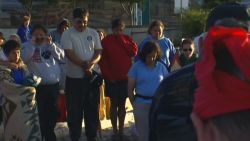
The Graving Yard was a waterfront location in Port Angeles, Washington. It had been designated as the place where the Washington State Department of Transportation would create a giant dry dock to build pontoons for the Hood Canal Bridge.
It was known to tribal elders as the location of a cemetery, attached to the Indian Village, dated at 2700 years old, which therefore existed almost 3000 years before there was a town of Port Angeles.
The Anglicized spelling of the name the village is Tse Whit Zen. This is my short film about it with Northwest Indian News.
Since 1990, Federal law has provided for the repatriation and disposition of certain Native American human remains, funerary objects, sacred objects, and objects of cultural patrimony. By enacting NAGPRA, Congress recognized that human remains of any ancestry "must at all times be treated with dignity and respect."
Congress also acknowledged that human remains and other cultural items removed from Federal or tribal lands belong, in the first instance, to lineal descendants, Indian Tribes, and Native Hawaiian organizations.
Under NAGPRA, if the body count unearthed exceeded 25, construction would have to cease.
Tribal leadership cut a deal with the state to circumvent NAGPRA, even though the state had no authority to suspend or ignore the federal law.
The tribe was promised jobs for enrolled members at 11 dollars an hour, to dig up the bones of their ancestors. The state would eventually walk back 62 million dollars in investment into the project out of legal concerns about contempt for federal law.
- "...my first thought was, that's a cemetery– you're not just going to find a few bones you're, you're digging up a cemetery. The late Sam Ulmer told us, 'We were going to have to be the ones to hand it down."
-Adeline Smith (Klallam)
"Look what went on in Port Angeles concerning the 'Graving Yard.' No considerations for a Native Burial Grounds (sic)"
-Linda Wiechman (Klallam)
Whatever negativity is brought to our fellow humans' hearts is brought to our own. This moment was a cauldron and a crucible of its recognition.
- "as humans, if we are to make changes in our new reality, we need to look at our shadow sides, and make things right to those we have hurt, maybe?" -Linda Wiechman (Klallam)
The TRC Final Report concluded that the Indian Residential School system was an attempted “cultural genocide,” but the escalating number of recovered unmarked graves points to something even darker.
Given that more than 1,300 graves have been identified using ground-penetrating radar at only four of the 139 federally run residential schools, the current official number of 4,120 students known to have died in the schools will end up being only a fraction of the actual total.
Spiritual practice holds one key to the release. That spiritual release was in evidence on the journey.
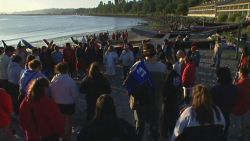
- Apologists for the residential school system have argued in recent weeks that the children buried at these schools largely died of diseases like tuberculosis (TB) and that the schools did the best they could to provide education and medical care to First Nations, Inuit and Métis children during a time when their communities were being devastated by similar diseases.
But even a cursory reading of the historical literature on residential schools shows just how wrong this line of thinking is.
I've said recently, "I had no idea what I was getting into." My work as a filmmaker and journalist has always been predicated on direct and rational observation. A solid review of history by first person accounts and records.
I had refrained from using the word genocide because I couldn't back it up by personal witness. I was also aware of strict UN definitions, which I was not certain could be met on a case by case basis. I didn't want to over step or compromise credibility.
What was the response to my work from non–native family, colleagues and friends?
- An Ivy League educated engineer: Are you still making that environmental sh**?
One female relative: "Indians are the lowest of the low."
A top client: "You can't make documentaries and do corporate marketing too."
Only years later, when I made and titled "Who Are My People?" my third film, did I begin to internalize the reality that my people are people who suffer. My people are people who have been abused. My people are not the people of entitlement and raging intolerance.
- The reality is that the conditions in the schools themselves were the leading contributor to the often-shocking death rates among the students. In 1907, Indian Affairs chief medical officer Peter Bryce reported some truly disturbing findings to his superiors. After having visited 35 government funded schools in western Canada, Bryce reported that 25 percent of all children who had attended these schools had died; at one school, the number was 69 percent.
Making "Song on the Water" I was uneased by the faces I saw through the camera lens. Beautiful, emotional and tragic. And now only this year do I and we know why. Only now is it spoken, rather than hidden, by non–advocacy publications like Scientific American.
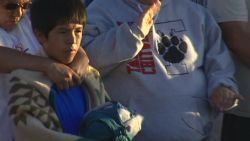
- While Bryce reported that “the almost invariable cause of death given is tuberculosis,” he by no means saw this as natural or inevitable. Bryce, instead, placed the blame for these appalling death rates on the schools themselves, which were poorly constructed, lacked proper ventilation and frequently housed sick students in the dormitories alongside their healthy classmates.
Perhaps times have changed and perhaps they have not. It plays out differently. I saw this with my own eyes at Standing Rock, South Dakota, in 2016, with MRAPS, helicopters, military hardware of all kinds, surveillance and prosecutions, holding yet to be charged Natives in cages barely fit for dogs.
- Bryce wasn’t alone in sounding the warnings about the schools. Throughout the system’s 100-plus-year history, school inspectors, school principals, medical officials and Indian agents repeatedly issued warnings about the unhealthy conditions in the schools. This archival record details the schools’ inadequate medical facilities, nonexistent isolation rooms and lack of school nurses.
It also documents perennially overcrowded and dilapidated buildings with poor ventilation and insufficient heating as well as the woefully inadequate nutrition provided to students.
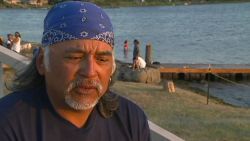 Let me be clear.
Let me be clear.
This is not a choice for me to write this. It is an obligation, but for different reasons.
- Malnutrition, of course, compromised children’s immune systems, making them more vulnerable to TB and other infectious diseases. In the case of TB, studies have consistently shown that malnutrition of the type commonly described by Paul and other survivors leads to significantly higher mortality among infected individuals. And, as our own research has shown, it would also have led to a much higher lifetime risk of a whole range of chronic conditions including obesity, type 2 diabetes and hypertension.
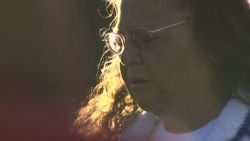 Government and church authorities were well aware of the extent of hunger and malnutrition in the schools, both before and after Bryce’s damning report. In the 1940s, for instance, a series of school inspections by the federal Nutrition Division found almost universally poor food service in the schools and widespread malnutrition.
Government and church authorities were well aware of the extent of hunger and malnutrition in the schools, both before and after Bryce’s damning report. In the 1940s, for instance, a series of school inspections by the federal Nutrition Division found almost universally poor food service in the schools and widespread malnutrition.As a filmmaker, seeing these connections, sometimes non–linear according to some accepted cultural narratives, can be a tremendous asset to wonderful storytelling.
- After attempts to improve the training for school cooks ended in failure, the head of the Nutrition Division, L.B. Pett, chose to use the poor health of the children as an opportunity to study the effectiveness of a variety of experimental nutrition interventions (and non–interventions, as it turned out) into the diets of malnourished children.
I would be less human if I were to shrink from connecting these dots.
- The result was a series of nutrition experiments conducted on nearly 1,000 children in six residential schools between 1948 and 1952. These included a double-blind, randomized experiment examining of the effects of nutrition supplements on children showing clinical signs of vitamin C deficiency, with half of the students receiving placebos and the other half receiving vitamin tablets; an examination of the impact of an experimental fortified flour mixture that included ground bonemeal, among other things, at St. Mary’s School in Kenora, Ontario; and an examination of the effects of both inadequate and adequate milk consumption on a population of children with clinical signs of riboflavin deficiency at the Alberni School in British Columbia.
Not-knowing cause and effect seems to give meditating monks a great deal of serenity. But the theory terrifies most of us.
We continue to seek to rectify the un–rectifiable, to cloak atrocities in the narrative of beneficence. Keep the focus on Jim Thorpe's athletic accomplishments, a tidy and convenient story, while setting him up for eventual failure and personal destruction.
Somebody made bad decisions but not us. In another time they didn't know better but not in ours.
The problem is we are they and they are us and if it happened then it can happen again, Thinking we know the cause and effect doesn't save us from self destruction either, morally, ethically, or physically.
- None of these experiments did anything to address the underlying causes of malnutrition at the schools, which was simply that the food being provided to the students was insufficient in both quantity and quality.
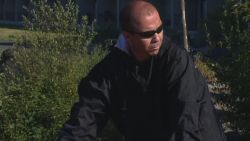 It’s clear, then, that the claim of residential school apologists that these children “only” died of TB is, ultimately, an attempt to whitewash what many residential school survivors and a growing number of scholars —ourselves included— have characterized as genocide, full stop.
It’s clear, then, that the claim of residential school apologists that these children “only” died of TB is, ultimately, an attempt to whitewash what many residential school survivors and a growing number of scholars —ourselves included— have characterized as genocide, full stop. It can also be the invitation to a dark pit of dissolution, horror and maladaptation.
Trauma.
- Many children did die of TB as well as epidemics of measles, influenza and other infectious diseases. But it is clear that these chronically and intentionally underfunded institutions actually caused the high death rates among students. What is also indisputable, based on the government’s own records, is that generations of federal government officials and politicians knew that the subpar conditions in the schools were killing children and chose to do nothing.
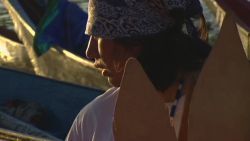 The issue of food and nutrition, in particular, speaks to the ways in which the poor conditions in the schools undermined student health. As residential school historian J.R. Miller has written, “We were always hungry’ could serve as the slogan for any organization of former residential school students.”
The issue of food and nutrition, in particular, speaks to the ways in which the poor conditions in the schools undermined student health. As residential school historian J.R. Miller has written, “We were always hungry’ could serve as the slogan for any organization of former residential school students.”As a corporate representative had told me in Port Angeles, when I was making the earlier film "Unconquering the Last Frontier," about dam removal, the restoration of a river, and a River People:
- "Do not engage in revisionist history."
We were discussing allegedly illegal activities perpetrated by the State of Washington, the previous dam owners and successors, and in specific the dam builder and promoter Thomas Aldwell.
We could say his actions resulted in the creation of the salmon hatchery system across the state and the destruction the salmon runs both natives and non-natives alike depended on.
Thus was set a terrible precedent of environmental decimation.
- The TRC collected haunting testimony from survivors, including Andrew Paul, who described his time at the Aklavik Roman Catholic Residential School in the Northwest Territories: “We cried to have something good to eat before we sleep. A lot of the times the food we had was rancid, full of maggots, stink.”
It didn't happen this way for a single reason, it happened this way for many reasons, in many circumstances, at different times, and it is still happening.
We can only shine light in these dark places of the heart, and give everyone a chance to climb out of the pit of their own and our own accord.
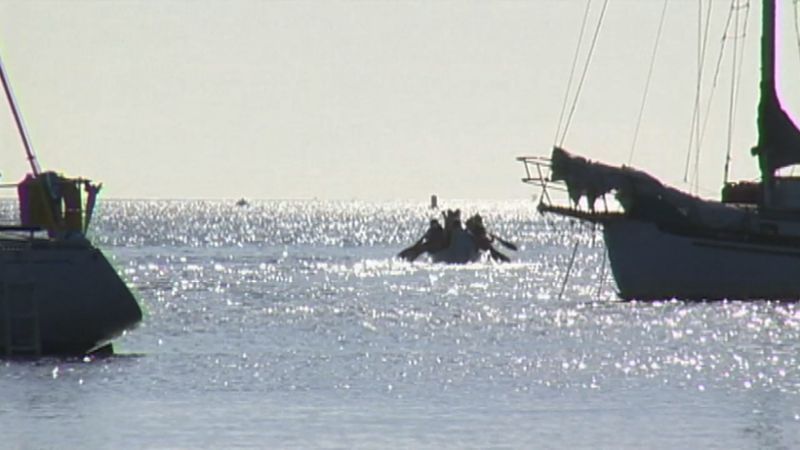
Articles for November 1, 2021 |



Quick Links
DINING
Willamette UniversityGoudy Commons Cafe
Dine on the Queen
Willamette Queen Sternwheeler
MUST SEE SALEM
Oregon Capitol ToursCapitol History Gateway
Willamette River Ride
Willamette Queen Sternwheeler
Historic Home Tours:
Deepwood Museum
The Bush House
Gaiety Hollow Garden
AUCTIONS - APPRAISALS
Auction Masters & AppraisalsCONSTRUCTION SERVICES
Roofing and ContractingSheridan, Ore.
ONLINE SHOPPING
Special Occasion DressesAdvertise with Salem-News
Contact:AdSales@Salem-News.com

Terms of Service | Privacy Policy
All comments and messages are approved by people and self promotional links or unacceptable comments are denied.
[Return to Top]
©2025 Salem-News.com. All opinions expressed in this article are those of the author and do not necessarily reflect those of Salem-News.com.